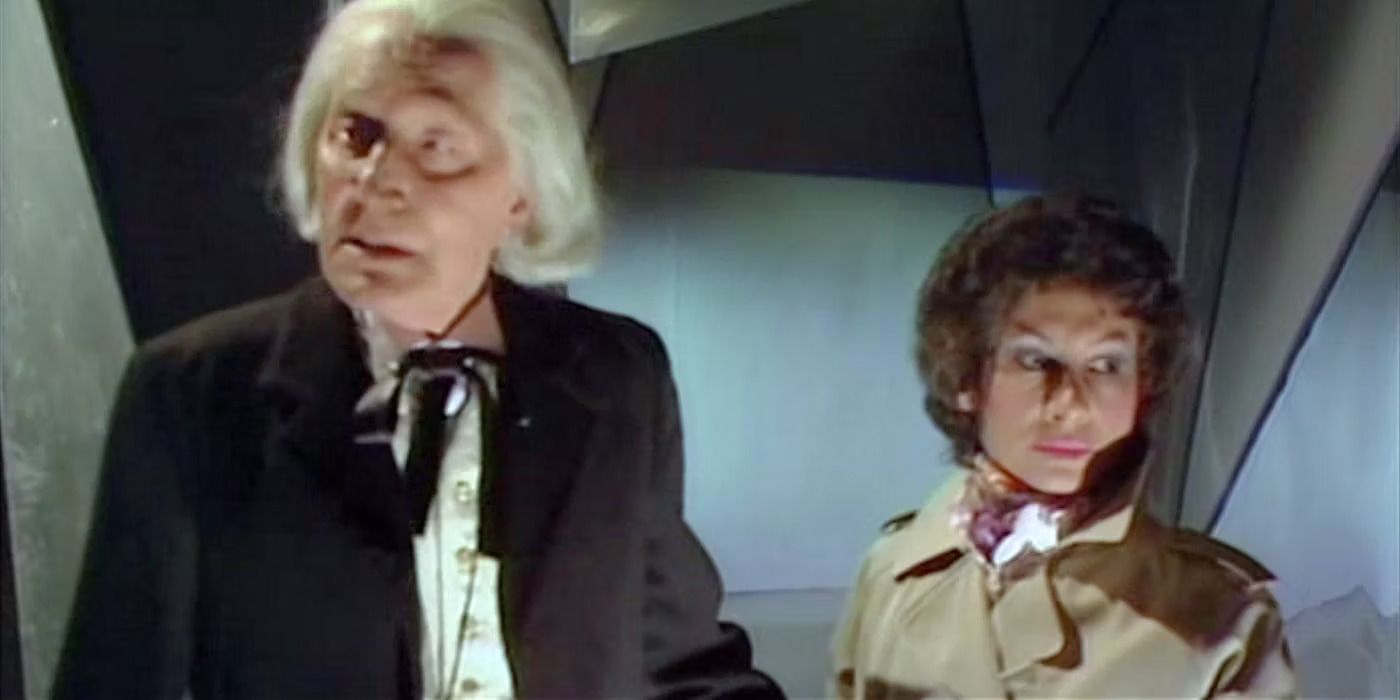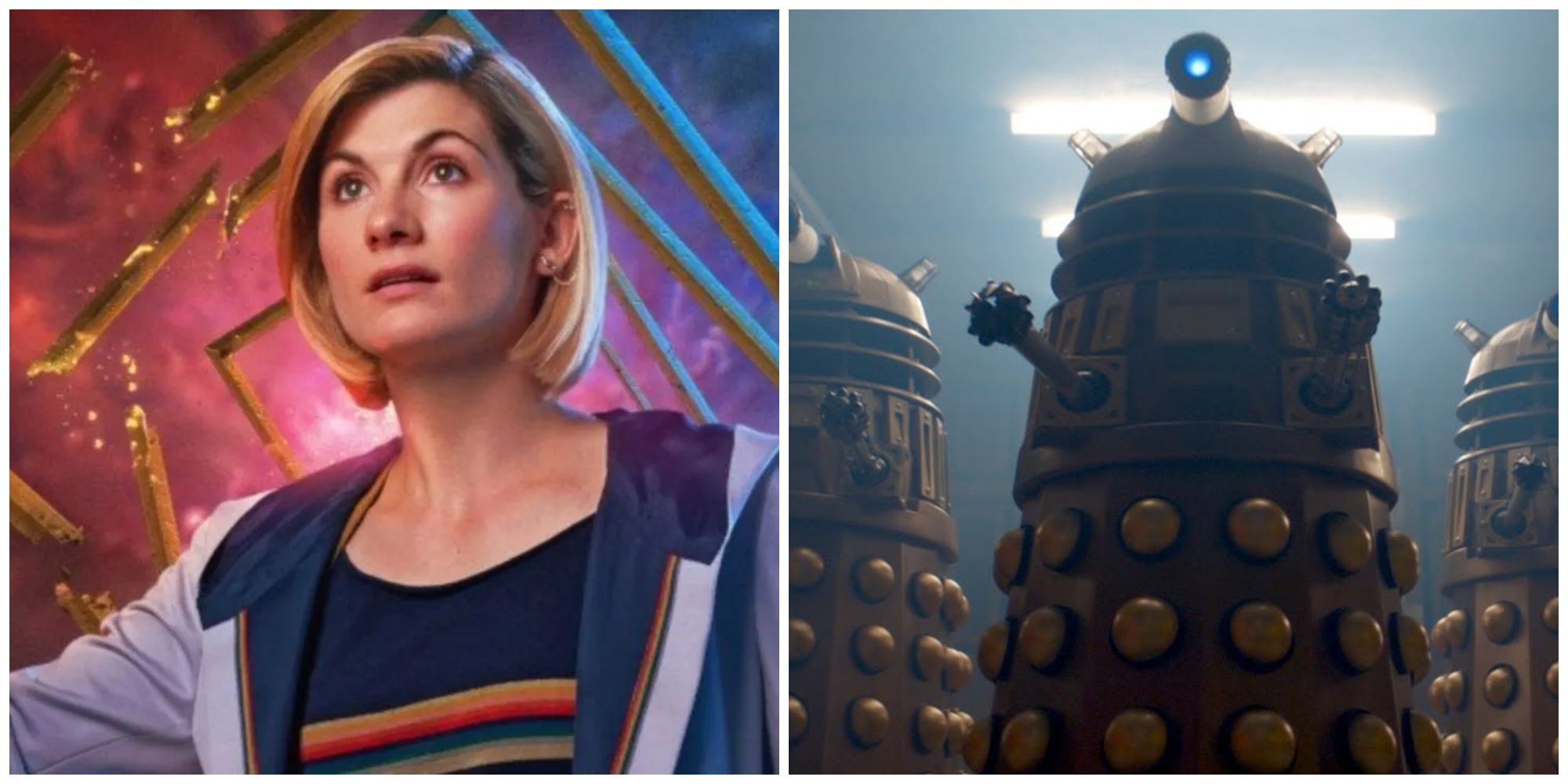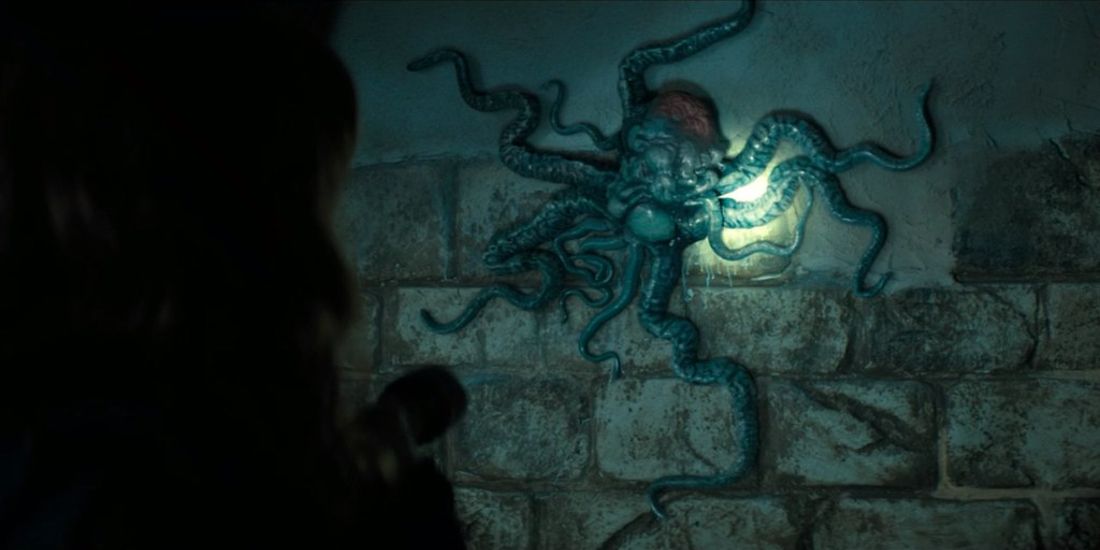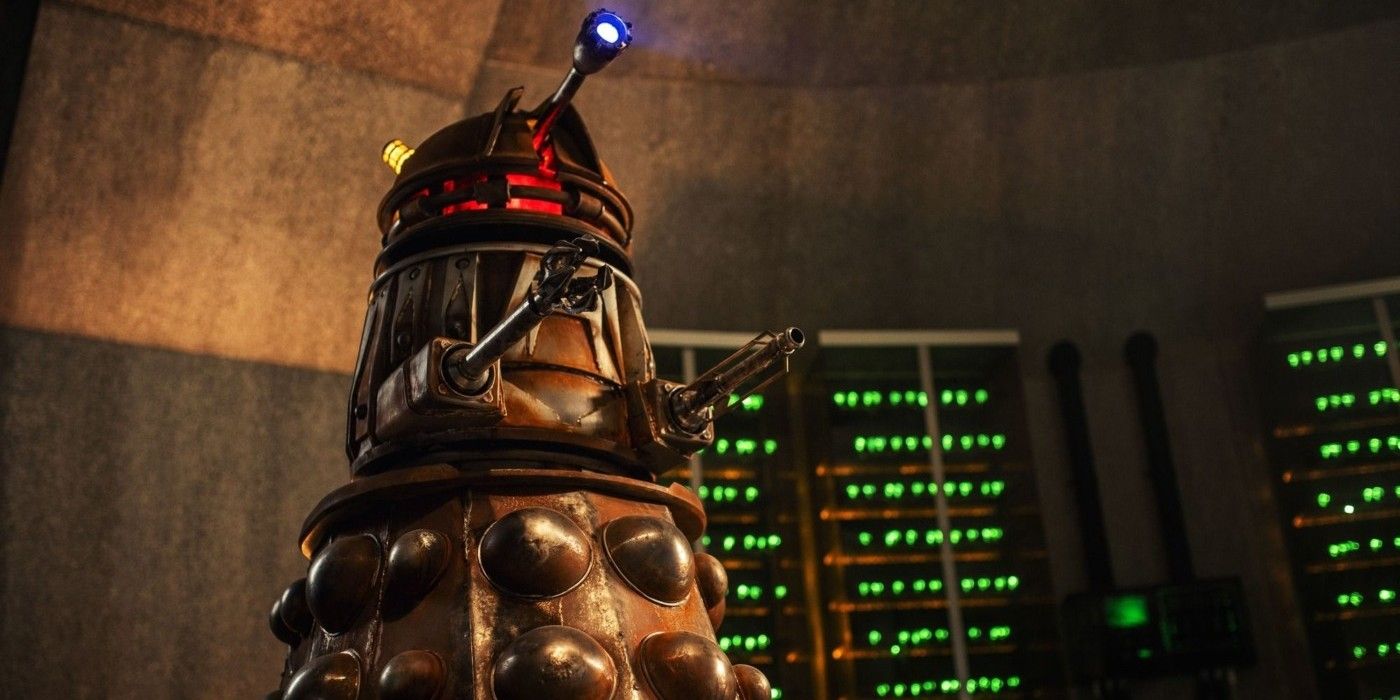For sixty years, Daleks have been synonymous with Doctor Who. Along with the TARDIS, these tin-can aliens are among the most recognizable iconography of the British sci-fi classic. But in the modern series, it's become harder to see them as innately threatening. Their design, borne out of a low-budget era, can come across as campy and almost comical. Fans of Doctor Who know the Daleks' history and what they're capable of, but passive observers (and one-off characters) may not understand the terror they inspire. They're dangerous, yes, with laser blasts that can kill in an instant. But they're not as horrific as the Weeping Angels or the Silence.
That changed, though, with the 2018 New Year's special "Resolution." In this episode, audiences get to see a Dalek outside its friend-shaped robotic armor. The story takes these creatures out of sci-fi camp, and into the realm of Lovecraftian horror. Though many Doctor Who fans take issue with Chris Chibnall's writing during his tenure on the show, "Resolution" shows him at the top of his game, playing on human fears to turn a comical enemy into something that terrifies viewers on a personal level.
Visual Design
"Resolution" is hardly the first time viewers have seen a Dalek outside its armor. But in the classic series, and early seasons of New Who, visually portraying these aliens came with special-effects challenges. In episodes like "Daleks in Manhattan/Evolution of the Daleks" (series 3), the creatures are gross and unsettling, but the technical restraints of 2007 render them unrealistic to the eyes of modern viewers. Their unshelled appearances in the classic series tend to elicit similar reactions: revulsion, a shudder, but not outright fear from the audience.
Perhaps most importantly, Daleks out of their shells are usually helpless. They usually appear this way when they have been defeated, stripped of their protection and their offensive tools. But that's not so in "Resolution." The Dalek may not have its armored shell, but it's still in control — in more ways than one.
The Dalek first appears when Lin, an archaeologist on a dig, shines her flashlight on the thing clinging to a sewer wall. Though only shown for a second, the "squid thing" that she discovers is terrifying. There's something indefinably sinister about the oozing, undulating creature and the mysterious goo it secretes. The sense of creepiness only intensifies when Lin brings her partner Mitch, the Doctor, and the TARDIS crew back to where she found the thing — only to see that it has vanished.
A Tried-And-True Horror Concept
Soon after Lin has left the sewer, it's revealed that the creature has attached itself to her back. Via a connection at the base of her skull, it has tapped into her nervous system to control her body and speak directly into her mind. In the same moments, the Doctor reveals to her companions (and thereby the audience) that the creature is in fact a Dalek. And, using Lin's body as its vessel, that Dalek has a mission to carry out: the subjugation of Earth.
The idea of a sinister presence wearing a familiar face never ceases to terrify. For centuries, media has explored the concept of hostile entities that trick us by taking on the appearance of something we trust. In the guise of an innocuous young woman, the Dalek careens down a highway at dangerous speeds and breaks into warehouses to reclaim its old parts, killing at least three people in the process. Each time it does, the Dalek's tentacles emerge from behind Lin's back. The slimy gray tendrils strangle victims and break their bones — and even though it takes place mostly offscreen, the sound effects and shadows on walls tell viewers everything they need to know. And all the while, a creepy smile takes over Lin's face.
Yet, the Dalek doesn't have full control over its host. Lin's fight against the Dalek's evokes the image of someone struggling against a demonic possession. Her body contorts into strange shapes; she speaks in a voice that is not her own. Though she tries to fight against the thing possessing her, her success is limited. Lin's consciousness remains active, but in some ways, this makes her situation even more horrifying. It's implied that she's fully aware and fighting for control, all while the Dalek uses her as a vessel to carry out its plan and kill those who stand in its way.
The Dalek's Triumphant Return
When the TARDIS crew (with Lin's partner Mitch along for the ride) manage to catch up with Lin, the Dalek has abandoned her. Though relieved that she's safe, the Doctor has bigger concerns now. Her ancient enemy has been rebuilding itself, and now it's more formidable than ever. Leaving Lin to recover, she sets off to find it.
When the fully reconstructed Dalek re-emerges in the barn, its metal casing rebuilt, it doesn't seem so comical anymore. The tank scrapped together from spare parts serves as a reminder of its ingenuity and resilience — formidable traits in a foe bent on genocide. It escapes the first confrontation, but as clever as she is, the Doctor manages to track it down. She again comes face-to-face with her old nemesis in its restored form, and after some clever scheming (with some help from Ryan's father, Aaron) defeats the thing before it can send a message to the Dalek fleet.
But the thing isn't defeated. Only its casing is.
When the Doctor has fought Daleks before, her focus has been on their nigh-indestructible metal shells. Using parts from a microwave, she and her team destroy the shell — and let the Dalek out. It attaches itself to Aaron, possessing him the same way it did Lin. To truly defeat it, the Doctor has to find a way to destroy the creature itself, not just its shell. The power of a supernova manages to tear the thing from Aaron's back, as Ryan and his father reconcile their long estrangement.
The Dalek is defeated, at least for now. As the Doctor says herself early in the episode, she never quite seems to be rid of them. After fighting a foe for centuries, or seeing a recurring antagonist on TV for decades, both the characters and the audience are sure that they know their enemy. But in "Resolution," both the Doctor and the viewers saw a new side to the opponent they thought they knew. The episode changed the Dalek formula for both audiences and for the Doctor herself, ensuring fans that even after 60 years, Doctor Who will always find a way to keep things fresh.







